Have you ever stopped to admire the smooth, octagonal axle that winds the curtain of your roller shutter? It might seem like a simple component, but behind that perfectly formed eight-sided shape lies a marvel of metalworking engineering: the octagonal tube making machine.
This specialized machine takes flat sheets of metal and transforms them into the vital octagonal tubes that find applications in various industries. But how exactly does it work? What are the different types of octagonal tube making machines available? Is one better than the other? Buckle up, because we’re about to delve into the fascinating world of octagonal tube making machines!
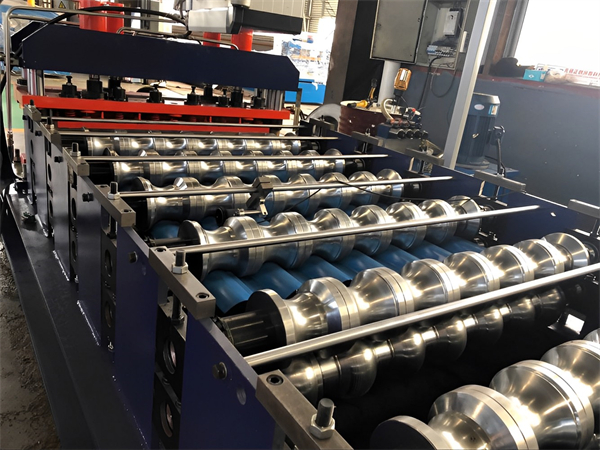
Function of Octagonal Tube Making Machines
Imagine a long, flat sheet of metal – like a giant sheet of aluminum foil. An octagonal tube making machine takes this sheet and feeds it through a series of forming rollers. Each roller is strategically shaped to progressively bend and fold the metal into an octagonal profile. Think of it like origami on an industrial scale, with precise shaping steps transforming the flat sheet into a three-dimensional tube.
The final step typically involves a welding process that joins the edges of the formed metal sheet, creating a continuous and sturdy octagonal tube. This process ensures the structural integrity of the tube, allowing it to handle the weight and tension of the roller shutter curtain.
In essence, octagonal tube making machines perform these key functions:
- Bending and forming: The rollers progressively bend the metal sheet into the desired octagonal shape.
- Welding (optional): Depending on the machine and application, the machine might weld the edges of the formed metal sheet for a seamless finish.
- काट रहा है: The machine cuts the formed tube to the desired length based on the specific application.
Types of Octagonal Tube Making Machines
The world of octagonal tube making machines isn’t a one-size-fits-all situation. There are two main types to consider, each with its own advantages and considerations:
- Single Screw Octagonal Tube Making Machine:
- Function: This is the workhorse of the octagonal tube making world. It utilizes a single screw feeder to pull the metal sheet through the forming rollers.
- Advantages: These machines are generally more affordable and simpler to operate compared to their double screw counterparts. They are a good choice for lower production volumes or for applications where precise control over material feeding isn’t critical.
- Disadvantages: Single screw machines might struggle with maintaining consistent feeding tension on wider metal sheets, which can lead to dimensional inconsistencies in the final product. Production speed might also be slower compared to double screw machines.
- Double Screw Octagonal Tube Making Machine:
- Function: This powerhouse machine employs two synchronized screws to precisely feed the metal sheet through the forming process.
- Advantages: Double screw machines offer superior control over material feeding, resulting in more consistent dimensional accuracy in the final tubes. They can also handle wider metal sheets and achieve higher production speeds compared to single screw machines.
- Disadvantages: As you might expect, double screw machines come with a higher price tag and can be more complex to operate. They are best suited for high-volume production environments where precision and speed are paramount.
-
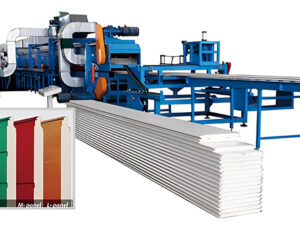 गेराज दरवाजा पैनल रोल बनाने की मशीन
गेराज दरवाजा पैनल रोल बनाने की मशीन -
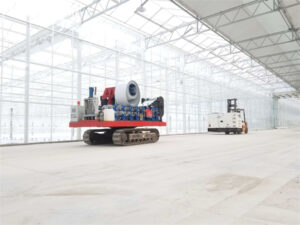 टैंक श्रृंखला के साथ ग्रीन आधुनिक कृषि गटर पैनल रोल बनाने की मशीन
टैंक श्रृंखला के साथ ग्रीन आधुनिक कृषि गटर पैनल रोल बनाने की मशीन -
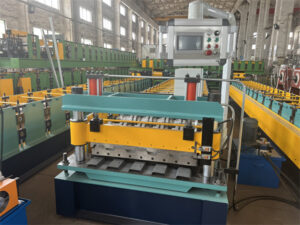 स्वचालित रूप से PPGI बाड़ पैनल के लिए रोल बनाने की मशीन चीन
स्वचालित रूप से PPGI बाड़ पैनल के लिए रोल बनाने की मशीन चीन -
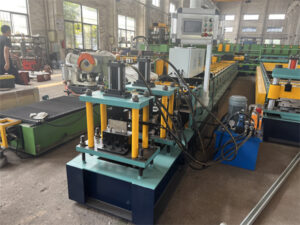 बाड़ गाइड रेल के लिए रोल बनाने की मशीन कंपनी
बाड़ गाइड रेल के लिए रोल बनाने की मशीन कंपनी -
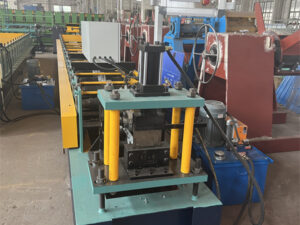 बाड़ पोस्ट गाइड रेल अच्छी कीमत के लिए रोल बनाने की मशीन की लागत
बाड़ पोस्ट गाइड रेल अच्छी कीमत के लिए रोल बनाने की मशीन की लागत -
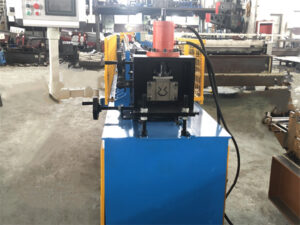 वी स्ट्रट रोल बनाने की मशीन
वी स्ट्रट रोल बनाने की मशीन -
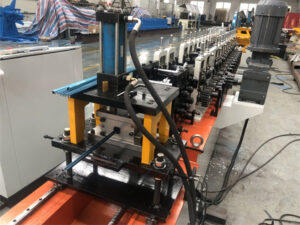 ग्लास विंडो सपोर्टर मशीन के लिए स्टेनलेस यू चैनल
ग्लास विंडो सपोर्टर मशीन के लिए स्टेनलेस यू चैनल -
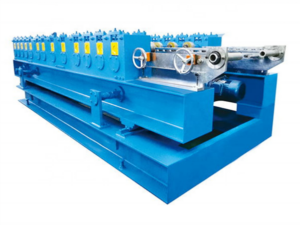 शटर बॉक्स सीरीज बनाने की मशीन
शटर बॉक्स सीरीज बनाने की मशीन -
 शामियाना ट्यूब रोल बनाने की मशीन
शामियाना ट्यूब रोल बनाने की मशीन
Choosing the Right Machine
The choice between a single or double screw octagonal tube making machine depends on your specific needs. Consider factors like:
- Production volume: For lower volumes, a single screw machine might suffice. For high-volume production, a double screw machine is the way to go.
- Material thickness and width: Wider or thicker metal sheets might require the superior feeding control offered by a double screw machine.
- Budget: Single screw machines are generally more budget-friendly.
- Desired production speed: Double screw machines typically achieve faster production speeds.
- Required level of dimensional accuracy: For applications requiring high precision, a double screw machine is a better choice.
Beyond Single vs. Double Screw:
There are additional factors to consider when selecting an octagonal tube making machine. These include:
- Roll forming station count: The number of forming stations in the machine determines the complexity of the final octagonal profile. More stations allow for more intricate shapes.
- Material compatibility: Ensure the machine is compatible with the type of metal you plan to use (e.g., steel, aluminum).
- Automation level: Some machines offer a higher degree of automation, reducing the need for manual intervention.
A Look at the Competition: Alternative Tube Making Methods
While octagonal tube making machines are a dominant force, it’s important to acknowledge alternative methods for creating tubes:
- Extrusion: Imagine a giant Play-Doh extruder. In metal extrusion, a heated metal billet (a solid block) is forced through a die with the desired octagonal profile. The resulting continuous stream of metal is then cut to the required length.
Advantages of Extrusion:
- Suitable for a wider range of shapes: Extrusion can create a vast array of tube shapes, beyond just octagonal.
- Can handle a wider variety of materials: Extrusion works well with various metals, including those that might be difficult to roll form.
Disadvantages of Extrusion:
- Higher setup costs: Extrusion dies can be expensive to create, especially for complex shapes like octagons.
- Generally slower production speeds: Compared to roll forming, extrusion might be slower, especially for smaller production runs.
- Potential for surface imperfections: The extrusion process can sometimes introduce surface imperfections on the finished tube.
Roll Forming vs. Extrusion: The Verdict
So, when it comes to creating octagonal tubes, which method wins? Here’s a breakdown:
- For high-volume production of octagonal tubes: Roll forming is the clear champion. It offers faster production speeds and lower setup costs compared to extrusion with an octagonal die.
- For small-batch production runs or complex octagonal shapes: Extrusion might be a viable option, especially if the cost of a roll forming die is prohibitive.
- For applications requiring a wider variety of tube shapes or materials: Extrusion offers greater flexibility.
Ultimately, the choice between roll forming and extrusion depends on your specific needs and priorities.
the Advantages of Octagonal Tube Making Machines
Now that we’ve explored the different types of octagonal tube making machines and alternative methods, let’s delve into the reasons why these machines are such a popular choice:
- Cost-effective production: Compared to other methods like extrusion, roll forming offers a more economical way to produce octagonal tubes, especially for high volumes.
- High-dimensional accuracy: Modern octagonal tube making machines can achieve exceptional precision in the final tube dimensions. This is particularly crucial for applications where tight tolerances are essential.
- Fast production speeds: Roll forming is a continuous process, allowing for rapid production of octagonal tubes, increasing overall efficiency.
- Material versatility: Octagonal tube making machines can handle a wide range of metal sheet thicknesses and, in some cases, can even work with different types of metals.
- Scalability: These machines come in various sizes and configurations, catering to production needs of all scales, from small workshops to large-scale industrial facilities.
- Wide range of applications: Beyond roller shutters, octagonal tubes find applications in various industries, including construction (support structures), furniture (legs, frames), and automotive (interior components).
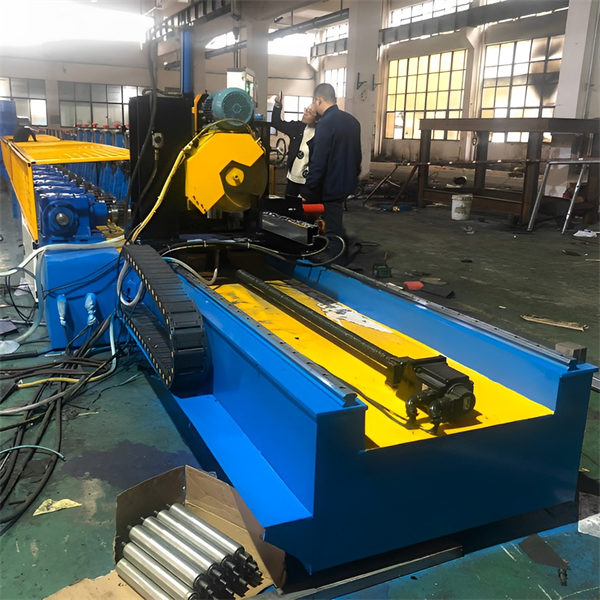
Applications of Octagonal Tube Making Machine
The octagonal shape offers a unique combination of strength and aesthetics, making octagonal tubes a versatile choice across various industries. Here are some prominent applications:
- Roller Shutters: This is the most common application for octagonal tubes. The eight-sided shape provides superior rolling strength and stability for the roller shutter curtain.
- Construction: Octagonal tubes can be used as lightweight yet sturdy support structures in various construction applications.
- Furniture: The clean lines and inherent strength of octagonal tubes make them a popular choice for furniture legs, frames, and other structural components.
- Automotive: In the automotive industry, octagonal tubes might be used for interior components like seat frames or roll bars.
- Agricultural Equipment: The strength and lightweight nature of octagonal tubes make them suitable for various components in agricultural equipment.
Suppliers and Pricing of Octagonal Tube Making Machine
So, you’re convinced that an octagonal tube making machine is the right fit for your needs. The next step? Finding the perfect supplier! Here’s a glimpse into the world of octagonal tube making machine suppliers and pricing:
Major Players in the Octagonal Tube Making Machine Arena:
The global market for octagonal tube making machines is vast, with numerous manufacturers vying for your business. Here are some of the prominent players:
- LOTOS FORMING: A Chinese manufacturer known for its high-quality and competitively priced octagonal tube making machines.
- BMS Machinery: This Taiwanese company offers a wide range of roll forming machines, including those dedicated to octagonal tube production.
While LOTOS FORMING offers a compelling budget-friendly option, let’s face off two other major players in the octagonal tube making machine market: Taiwan’s BMS Machinery and China’s Jiangsu Huazhong Numerical Control Equipment (JSHNC). Here’s a breakdown to help you pick your champion:
- BMS Machinery:
- Reputation: Renowned for their reliable and user-friendly roll forming machines.
- Strengths: BMS offers a good balance of affordability and quality. Their machines are known for their ease of operation and user-friendly controls. They also provide good customer support.
- Potential drawbacks: Their selection of octagonal tube making machines might be more limited compared to JSHNC. Additionally, some users report that after-sales service response times could be improved.
- Jiangsu Huazhong Numerical Control Equipment (JSHNC):
- Reputation: A major player in the Chinese machine manufacturing industry, known for their extensive range of metal forming equipment.
- Strengths: JSHNC boasts a wider variety of octagonal tube making machines, catering to diverse production needs and budget ranges. They also offer customization options for specific requirements.
- Potential drawbacks: JSHNC machines might carry a slightly higher price tag compared to BMS. Additionally, some users mention potential language barriers when dealing with customer service.
Pricing Considerations:
The cost of an octagonal tube making machine can vary significantly depending on several factors:
- Machine type: Single screw machines are generally more affordable than double screw machines.
- Roll forming station count: Machines with more stations tend to be more expensive.
- Material compatibility: Machines designed for working with tougher metals might come at a premium.
- Automation level: Machines with higher automation features will have a higher price tag.
- Brand and reputation: Well-known brands might command a higher price compared to lesser-known manufacturers.
As a general ballpark figure, expect to pay anywhere from $20,000 to $200,000 or more for a good quality octagonal tube making machine.
Remember: When evaluating pricing, consider not just the upfront cost of the machine but also factors like after-sales service, warranty coverage, and the availability of spare parts.
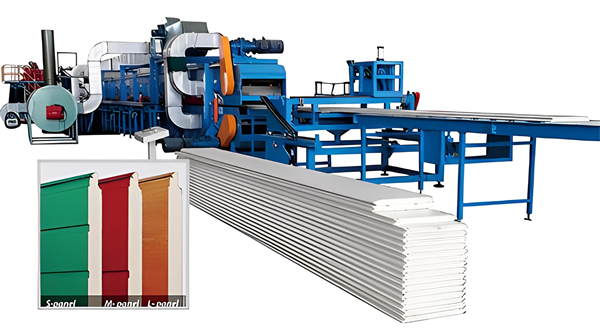
पूछे जाने वाले प्रश्न
Got questions about octagonal tube making machines? We’ve got answers! Here’s a breakdown of some of the most frequently asked questions:
Q: What kind of metal can octagonal tube making machines work with?
A: These machines can handle a wide range of metals, including mild steel, aluminum, stainless steel, and even some galvanized metals (depending on the machine’s capabilities).
Q: What is the difference between a cold rolling mill and an octagonal tube making machine?
A: Cold rolling mills are used to reduce the thickness of metal sheets. Octagonal tube making machines, on the other hand, take flat sheet metal and form it into a three-dimensional octagonal shape.
Q: Can octagonal tube making machines create other shapes besides octagons?
A: No, these machines are specifically designed for creating octagonal tubes. However, the world of roll forming encompasses machines that can create a vast array of other tube shapes, from square and rectangular to round and elliptical.
Q: I’m new to metalworking. How difficult is it to operate an octagonal tube making machine?
A: The complexity of operating an octagonal tube making machine depends on the specific model. Generally, modern machines come with user-friendly controls and might even offer features like automatic settings for different tube sizes. That being said, familiarization with metalworking principles and safety protocols is always recommended. Many reputable suppliers also provide training programs for their machines.
Q: Where can I find more information about octagonal tube making machines?
A: Several resources can offer you more information:
- Machine manufacturer websites: Most reputable octagonal tube making machine manufacturers have detailed information about their products on their websites.
- Industry publications: Metalworking industry publications and websites might feature articles or reviews on octagonal tube making machines.
- Online forums and communities: Online forums dedicated to metalworking can be a great place to connect with other users and get their insights on octagonal tube making machines.
By delving into these resources, you can gain a deeper understanding of these machines and make an informed decision when selecting the perfect one for your needs.
